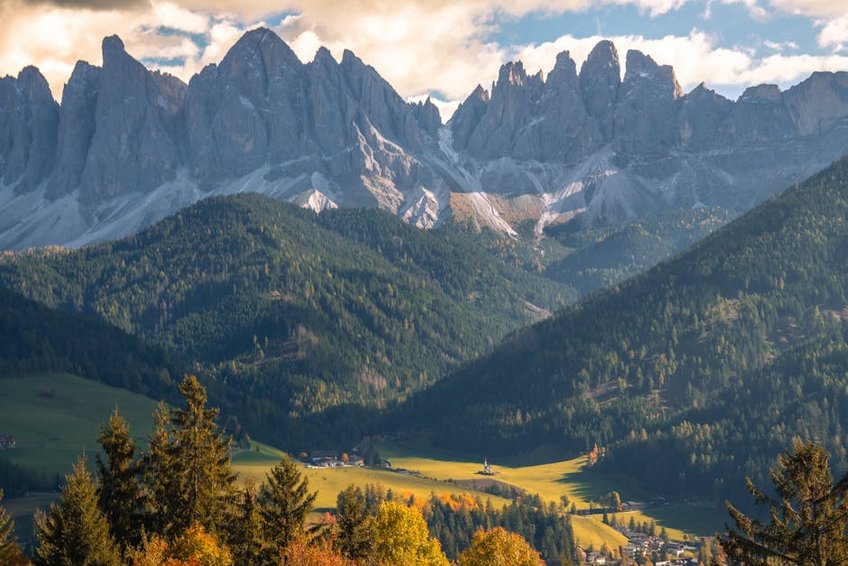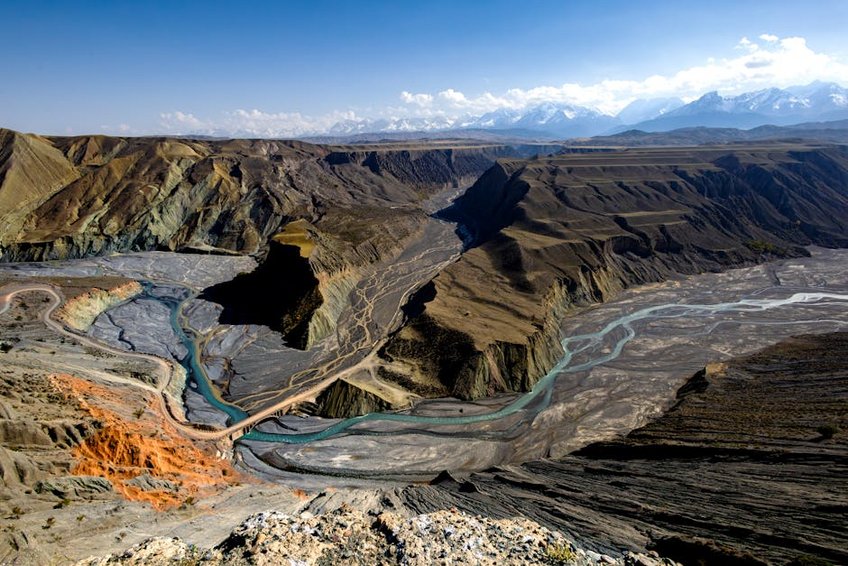Jamaica Blue Mountains Coffee Tour: A Bean-to-Cup Adventure
Embarking on a Jamaica Blue Mountains coffee tour immerses you in the world’s most celebrated coffee-growing region, where ideal climate conditions and meticulous cultivation methods produce beans renowned for their mild flavor and lack of bitterness. You’ll traverse lush, misty highlands between 2,000 and 5,000 feet elevation, witnessing the entire journey from hand-picked cherries to your morning brew through guided farm visits and expert tastings. This guide covers essential planning details, must-visit estates, cultural insights, and practical tips to maximize your Caribbean coffee pilgrimage.
Essential Information About Blue Mountain Coffee
Jamaica’s Blue Mountain region boasts a unique terroir characterized by volcanic soil, cool temperatures, and frequent rainfall, creating perfect conditions for growing the delicate Arabica beans. The Coffee Industry Regulation Act protects the “Blue Mountain” name, ensuring only coffee grown in designated parishes at specific altitudes receives this prestigious certification. This legal framework guarantees authenticity and quality for visitors seeking genuine plantation experiences.
Historically, coffee cultivation began in 1728 when Sir Nicholas Lawes introduced the first plants, with the industry flourishing through the 19th century despite hurricanes and market fluctuations. The distinctive microclimate slows bean maturation, resulting in a denser, more complex flavor profile appreciated by global connoisseurs. Today, approximately 6,000 farmers cultivate these prized beans across small holdings and larger estates.
What Makes This Coffee Unique
Several factors distinguish Jamaican Blue Mountain coffee from other varieties worldwide.
- The high-altitude growing environment between 3,000-5,500 feet creates slower bean development, yielding a smoother, less acidic cup with subtle sweetness and no bitter aftertaste.
- Strict certification standards require hand-picking only ripe cherries, traditional wet processing methods, and government-approved grading that ensures consistent size and quality.
- Unique flavor notes include bright acidity, floral aromatics, and hints of nuts, chocolate, and spices that remain balanced without dominating the palate.
- Budget travelers should allocate $50-80 daily using public transportation, guesthouses at $40-60 nightly, and group tours costing $25-40 per plantation visit while focusing on free activities like hiking and village exploration.
- Mid-range options typically cost $120-180 daily with rental cars at $40-60 daily, hotels or boutique inns at $80-120 nightly, and premium guided tours including tastings at $50-75 per experience with meals at local restaurants.
- Luxury experiences range from $250-400 daily featuring private drivers at $100-150 daily, plantation stays or luxury resorts at $200-300 nightly, exclusive tastings at $80-120, and gourmet dining with paired coffee experiences.
- Jamaica Tourist Board
- Wikipedia – Jamaica Blue Mountain Coffee
- Coffee Industry Board of Jamaica
Key Growing Regions and Terroir
The officially designated Blue Mountain region spans Portland, St. Thomas, St. Andrew, and St. Mary parishes, with the highest quality beans typically coming from elevations above 3,000 feet. Volcanic soil rich in minerals provides essential nutrients, while cloud cover and mist protect plants from intense tropical sun, moderating temperatures between 60-70°F (16-21°C). These specific conditions cannot be replicated elsewhere, making this a truly unique coffee origin.
Different valleys and slopes within the mountains produce subtle variations in flavor profiles, with eastern slopes often yielding brighter, more acidic beans while western areas produce fuller-bodied cups. The complex topography means microclimates change within short distances, creating diverse tasting experiences across various estates. You’ll notice these nuances during comparative tastings on your plantation visits.
Cultivation and Processing Methods
Traditional farming practices dominate the region, with most harvesting occurring manually between August and December when cherries reach perfect ripeness. Farmers selectively pick only red cherries, requiring multiple passes through the same trees over several weeks to ensure optimal quality. This labor-intensive approach contributes significantly to the premium price and exceptional character of the final product.
After harvesting, beans undergo pulping to remove outer fruit, followed by fermentation for 12-18 hours to develop flavors before washing and sun-drying on large patios. The parchment coffee then rests in silos for several weeks, allowing flavors to mature before hulling, grading, and roasting. Many tours demonstrate these traditional methods that have remained largely unchanged for generations.

Alt: “blue-mountain-coffee-plantation-terraced-hillsides-jamaica”
Planning Your Jamaica Blue Mountains Coffee Tour
Organizing your Jamaica Blue Mountains coffee tour requires considering seasonal patterns, as the prime harvesting and processing months from September through December offer the most active and educational experiences. You’ll witness cherry picking, processing operations, and potentially participate in harvest activities during this period, though tours operate year-round with different seasonal highlights. Shoulder months from January to April provide excellent weather for mountain travel with fewer crowds.
Budget approximately $800-1,200 per person for a 5-7 day trip focusing on coffee experiences, including mid-range accommodations, rental car, tour fees, and meals, though costs can vary significantly based on accommodation choices and tour selections. Luxury plantation stays and private guided tours can increase budgets to $2,000+, while backpacker options using public transportation might reduce costs to $500-700. Advance reservations are essential, particularly during peak season from December to April.
Most coffee estates require bookings 2-4 weeks ahead, especially for smaller, family-owned farms that limit group sizes to maintain intimate experiences. The winding mountain roads demand careful driving, so consider hiring a local driver familiar with the routes if you’re uncomfortable navigating steep, narrow passages. Pack layers for changing mountain weather, sturdy walking shoes for plantation terrain, and a notebook for recording tasting notes.
Best Time to Visit for Coffee Tours
Visit between September and November for the most comprehensive coffee experience, when harvesting reaches its peak and you can observe the full production cycle from field to processing. Daytime temperatures range from 75-82°F (24-28°C) with cooler nights around 65-70°F (18-21°C), creating comfortable touring conditions despite occasional afternoon showers. This period offers the most authentic insight into coffee culture despite being the rainiest season.
December through April provides drier weather with minimal rainfall, excellent road conditions, and pleasant temperatures between 70-80°F (21-27°C), though you’ll miss the active harvest period. May through August represents the low season with lower prices and fewer tourists, though some smaller estates may reduce tour availability during these months. Regardless of timing, morning tours typically provide the clearest mountain views before afternoon clouds settle.
Budget Planning and Costs
Your coffee tour budget varies significantly based on accommodation style, transportation choices, and tour selections.
Essential Preparation Checklist
Pack waterproof layers, sturdy hiking shoes with good traction, and breathable clothing suitable for variable mountain conditions that can change rapidly throughout the day. Bring a quality camera for stunning landscape photography, a reusable water bottle, and cash in Jamaican dollars since many rural estates don’t accept credit cards. Don’t forget any necessary medications and motion sickness remedies for the winding roads.
Secure comprehensive travel insurance covering medical emergencies and trip interruptions, ensure your passport has at least six months validity, and check if your country requires a visa for Jamaica (US and EU citizens don’t for stays under 90 days). Download offline maps since cellular service can be unreliable in remote mountain areas, and make photocopies of important documents stored separately from originals. Book accommodations and key tours at least one month ahead during peak seasons.
Top Coffee Tour Attractions and Activities
The Blue Mountains offer diverse coffee experiences ranging from large commercial operations to intimate family farms, each providing unique perspectives on Jamaican coffee culture. You can participate in cherry picking during harvest season, observe traditional processing methods, and learn roasting techniques from fourth-generation farmers. Many estates combine coffee education with spectacular nature experiences, including guided hikes through coffee forests and bird watching in adjacent nature reserves.
Beyond standard tours, several plantations offer advanced “barista for a day” programs where you’ll learn professional brewing methods, latte art, and coffee cocktail creation using premium beans. The most immersive experiences include multi-day stays on working farms where you can shadow farmers during their daily routines and participate in community activities. These comprehensive approaches provide deeper understanding than standard hour-long tours.
Must-See Coffee Plantations
Craighton Estate offers one of the most educational experiences with comprehensive tours covering history, cultivation, and tasting, plus spectacular views from their Great House overlooking Kingston. Clifton Mount Estate provides authentic working farm experiences where you can observe traditional sun-drying methods and sample rare peaberry varieties in their rustic tasting room. Both estates require advance booking but deliver exceptional value and authenticity.
Old Tavern Estate produces some of the region’s highest-grade coffee with tours emphasizing sustainable farming practices and direct farmer interactions. Twyman’s Old Tavern Coffee Estate offers intimate group sizes and the opportunity to purchase beans directly from the source at significantly lower prices than retail. These smaller operations typically provide more personalized attention and deeper cultural connections than larger commercial tours.
Coffee Tasting and Cupping Sessions
Professional cupping sessions teach you to evaluate coffee using international standards, identifying subtle flavor notes like hazelnut, chocolate, citrus, and floral tones specific to different estates and elevations. You’ll learn proper slurping techniques to aerate the coffee across your palate, distinguishing between acidity, body, aroma, and aftertaste characteristics. These sessions typically last 60-90 minutes and include 4-6 different coffee samples for comparison.
Many estates now offer food and coffee pairing experiences, matching specific brews with Jamaican specialties like jerk-spiced nuts, tropical fruit platters, or dark chocolate to demonstrate complementary flavors. Some advanced sessions explore how roast profiles from light to dark affect the final cup, allowing you to discover personal preferences beyond standard preparation methods. These educational components significantly enhance your appreciation for specialty coffee.
Hands-On Coffee Processing Experiences
During harvest season, several farms offer participatory activities where you can join picking crews, learning to identify ripe cherries and proper harvesting techniques that preserve plant health. You might assist with pulping operations using traditional machinery, observe fermentation monitoring, or help spread beans on drying patios while learning about moisture content targets. These hands-on elements create memorable connections to the coffee-making process.
Some estates provide roasting workshops where you can roast small batches to your preferred profile, then package and label your creation as a unique souvenir. More comprehensive programs include green coffee grading lessons, where you’ll sort beans by size and quality using official standards before cupping the results. These specialized activities require longer time commitments but deliver unparalleled insider knowledge.
Practical Travel Information
Most visitors fly into Norman Manley International Airport in Kingston (KIN), which provides closer access to the Blue Mountains than Montego Bay, though both airports service international flights from major hubs. Renting a car offers maximum flexibility for exploring various estates, though the narrow, winding roads demand cautious driving and standard vehicles typically suffice for main routes. Consider hiring a local driver if you’re uncomfortable with mountain driving, costing approximately $80-120 daily.
Public transportation options include route taxis and coaches from Kingston to major mountain towns like Mavis Bank, though schedules can be irregular and won’t access remote estates directly. Guided tour companies provide transportation from Kingston and Ocho Rios, combining multiple plantations with other attractions like waterfalls or hiking trails for comprehensive day trips. Accommodation ranges from basic guesthouses to luxury eco-lodges, with most clustered in specific mountain communities.
| Accommodation Type | Options and Features | Price Range (USD) |
|---|---|---|
| Guesthouses | Basic rooms with shared facilities, local home cooking, community immersion | $40-70 nightly |
| Boutique Inns | Private bathrooms, mountain views, breakfast included, tour assistance | $80-150 nightly |
| Plantation Stays | Working farm experience, guided activities, authentic meals, coffee included | $120-200 nightly |
| Luxury Eco-Resorts | Infinity pools, spa services, gourmet dining, private guides, premium amenities | $250-400 nightly |


